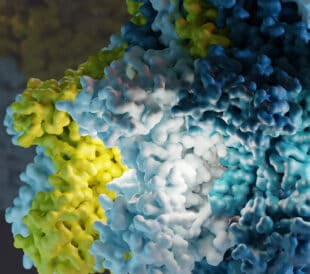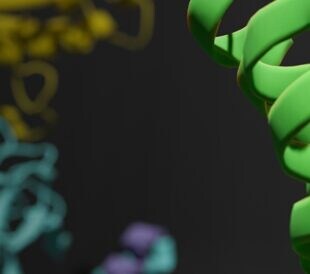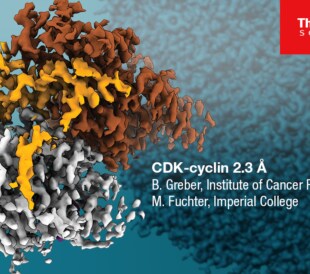The Hospital for Sick Children and the University of Toronto leverage cryo-EM to guide novel treatments
Medical research is at the forefront of our battle against disease. More and more, scientists are looking at biological systems at ever smaller scales to develop highly specific and effective treatments against even the most challenging diseases. To that end, they are leveraging structural biology, which seeks to understand living systems at the molecular level.
With structural biology, we can directly observe how bacteria and viruses interact with our cells and disrupt cellular machinery, leading to physiological symptoms. Cryo-electron microscopy (cryo-EM) is an increasingly popular structural biology technique that allows high-quality imaging across a range of scales from proteins up to entire cellular structures with cryo-tomography. This can include highly critical systems such as the large protein complexes that make up biofilms in difficult to treat bacterial infections or viral structures like the coronavirus spike protein, which was successfully used to develop vaccines during the COVID-19 pandemic.
The Hospital for Sick Children, affiliated with the University of Toronto, is leveraging this groundbreaking technology in their state-of-the-art Cryo-EM Facility. We talked to the director, Dr. John Rubinstein, about his work and how molecular insights are shaping medical research and treatment.
Cryo-EM collaborations propel medical research
“For many of the problems that we and our collaborators are working on, cryo-EM is the only method that will give atomic-resolution insight into the structures we are studying,” noted Dr. Rubinstein.
As a facility that serves the entire Toronto biomedical research community, the Hospital for Sick Children has “helped out with structural studies for the development of new and improved vaccines, candidate antibiotics bound to their targets, and also targets for mammalian proteins involved in cancer signaling, where the structures could give insights into how one might come up with a new therapeutic to treat cancer,” he added.
Cryo-EM advances meet the need for deeper structural insights
“It is an extremely exciting time to be in cryo-EM. I think we’ve benefited a lot from the advances made by many members of the community in areas such as specimen preparation, imaging, and image analysis. But none of this would have been possible without a sustained effort from companies that have developed these great instruments, and particularly the great cameras that have revolutionized cryo-EM and brought us from low resolution era to current high-resolution capabilities,” said Dr. Rubinstein.
In keeping up with the latest advances in technology, the Hospital for Sick Children was the first institution globally to acquire the recently launched Thermo Scientific Glacios 2 Cryo-TEM, which they use in conjunction with a Thermo Scientific Krios Cryo-TEM to speed up their entire data collection process. The Glacios 2 Cryo-TEM is used to collect small sample datasets and quickly identify how to best optimize specimen preparation. When optimal specimens are identified during screening they are transferred to the Krios Cryo-TEM for final, high-quality data collection. This workflow enables rapid specimen optimization and consistent production of publication-quality data.

Rubinstein noted that the Glacios 2 Cryo-TEM “was the missing piece to let us quickly generate lots of specimens that can lead to lots of biomedical insight, lots of publications, and lots of impact.”
Optimizing the pace at which structural insights can be obtained will inevitably have a direct impact on the pace at which critical, lifesaving discoveries can be made. Through the highly collaborative nature of the Cryo-EM Facility, researchers throughout the Toronto area are able to see diseases at the most fundamental level, guiding the development of wholly novel treatments.
Learn more about the Glacios 2 Cryo-TEM and its applications in structural biology >>
Alex Ilitchev, PhD, is a scientific editor at Thermo Fisher Scientific. John Rubinstein, PhD, is a senior scientist and director of the Cryo-EM Facility at the Hospital for Sick Children, as well as a professor at the University of Toronto Departments of Medical Biophysics and Biochemistry. Excerpts from the full interview have been edited for clarity and length.





Leave a Reply